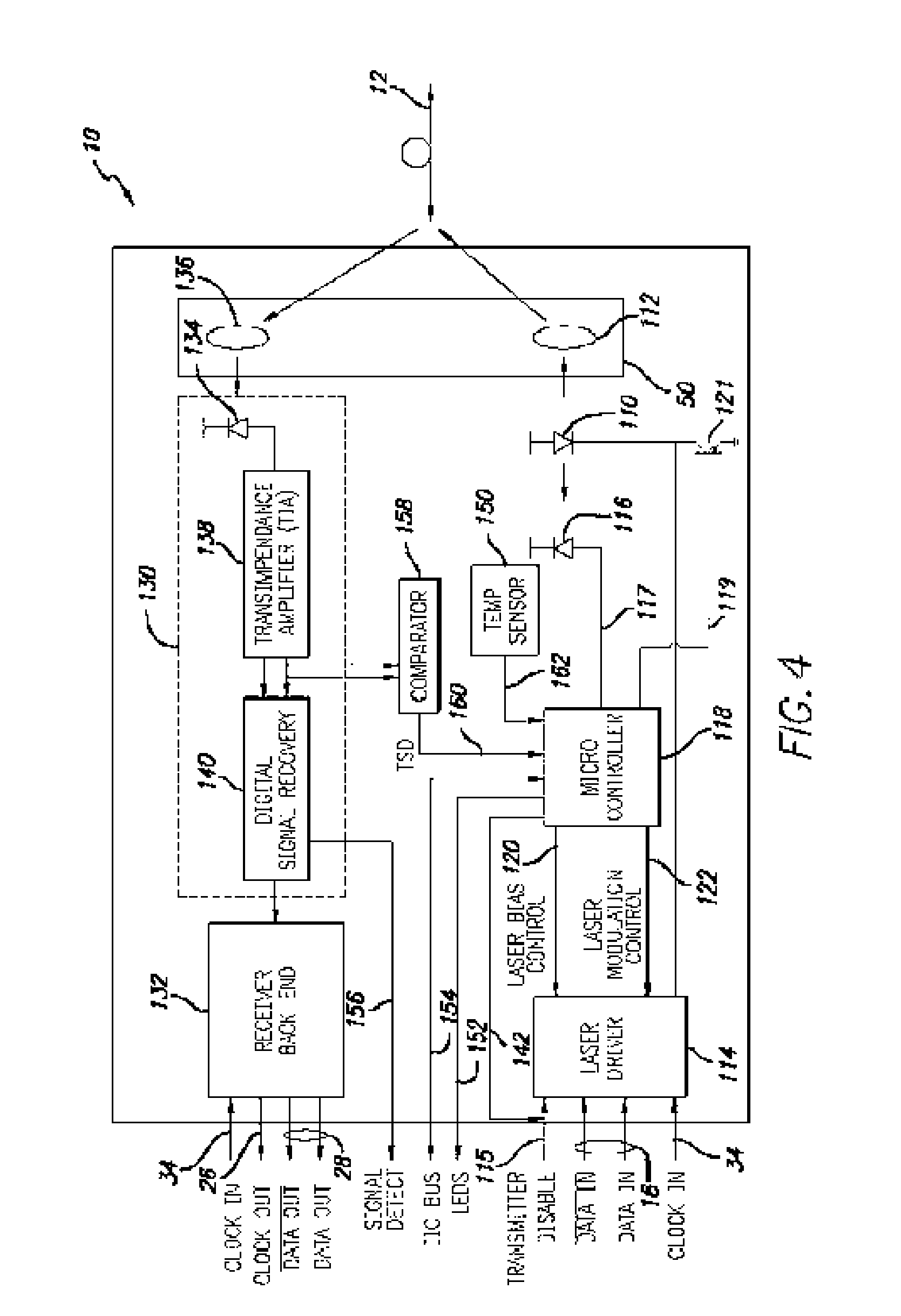SINGLE FIBER TRANSCEIVER with FAULT LOCALIZATION
a single fiber transceiver and fault localization technology, applied in the direction of electromagnetic transmission, transmission, electrical equipment, etc., can solve the problems of operator error, unintentional cut of the fiber trunk, increase of inadvertent fiber break, etc., and achieve high optical return loss (orl), without added cost or complexity
- Summary
- Abstract
- Description
- Claims
- Application Information
AI Technical Summary
Benefits of technology
Problems solved by technology
Method used
Image
Examples
Embodiment Construction
[0022] Referring to FIG. 1, a high-level block schematic drawing of a fiber optic data transmission system incorporating the present invention is illustrated.
[0023] As shown in FIG. 1, a first transceiver 10 is coupled to a second transceiver 20 via optical fiber 12. Both transceiver 10 and transceiver 20 include transmitter circuitry to convert input electrical data signals to modulated light signals coupled into fiber and receiver circuitry to convert optical signals provided along the optical fibers to electrical signals and to detect encoded data and / or clock signals. As indicated by the arrows on the optical fiber 12, transceiver 10 transmits data to transceiver 20 in the form of modulated optical light signals along optical fiber 12 and also receives optical signals from transceiver 20 along the same fiber 12. For example, single wavelength may be employed and both transceivers may transmit and receive at the same wavelength. Alternatively transmission in the two directions m...
PUM
 Login to View More
Login to View More Abstract
Description
Claims
Application Information
 Login to View More
Login to View More - R&D
- Intellectual Property
- Life Sciences
- Materials
- Tech Scout
- Unparalleled Data Quality
- Higher Quality Content
- 60% Fewer Hallucinations
Browse by: Latest US Patents, China's latest patents, Technical Efficacy Thesaurus, Application Domain, Technology Topic, Popular Technical Reports.
© 2025 PatSnap. All rights reserved.Legal|Privacy policy|Modern Slavery Act Transparency Statement|Sitemap|About US| Contact US: help@patsnap.com



